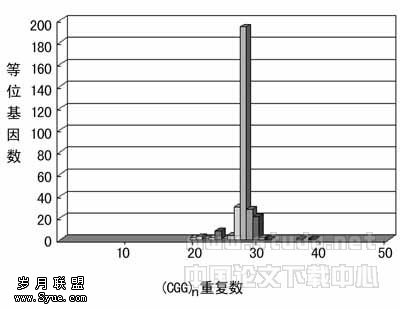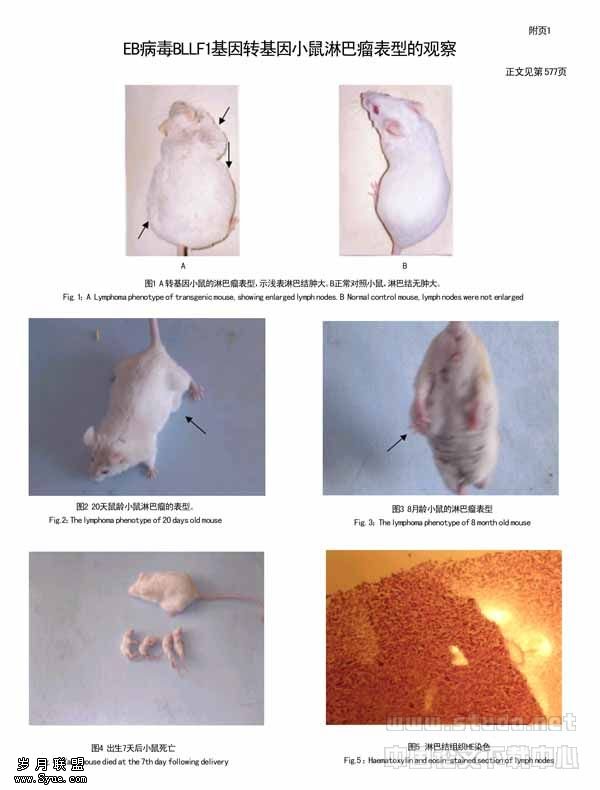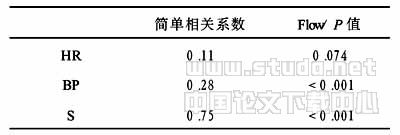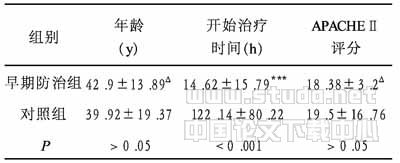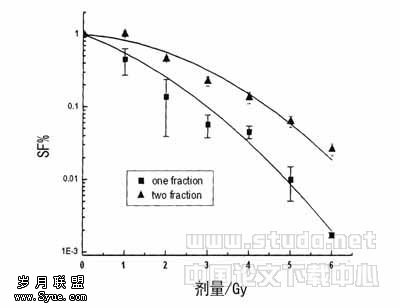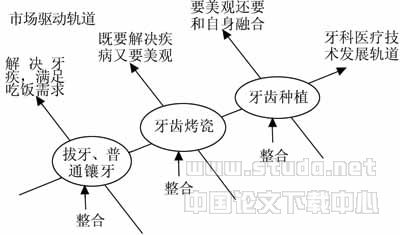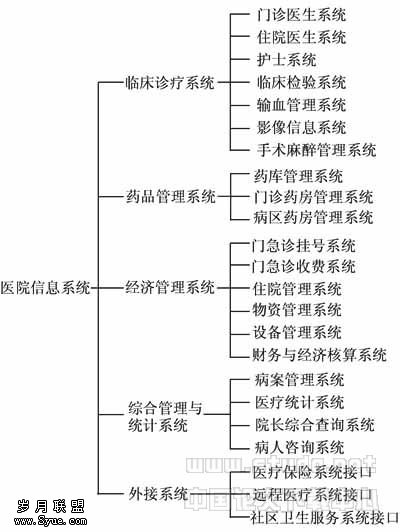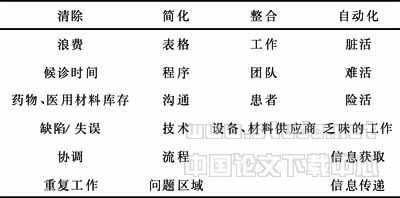雄激素受体基因第一外显子CAG重复序列长度多态性与男性膀胱癌的发生有关
作者:刘贵秋,苏勤,张伟,刁小莉,冯英明
【关键词】 膀胱肿瘤
Length of CAG repeat at exon 1 of androgen receptor gene is associated to development of bladder carcinoma in males
【Abstract】 AIM: To study the possible association between the length of the polymorphic CAG short tandem repeat (STR) at androgen receptor (AR) first exon and bladder cancer development. METHODS: Genomic DNA was extracted from the paraffinembedded bladder carcinoma tissues from male patients and amplified by PCR and then the products were resolved by electrophoresis on denaturing polyacrylamide gels and visualized through silver staining. The CAG repeat numbers were assessed by the mobility of their products and direct sequencing for some representative samples. The samples with appendicitis from 94 male patients were examined in a parallel way as a reference group. RESULTS: A total number of 95 of bladder cancer samples were examined. Six of them (6.3%) showed microsatellite instability, with one excluded from the following assessment due to the difficulty in determining precisely the normal position of its amplification product. The CAG repeat numbers for the 94 patients with bladder cancer and the reference patients with appendicitis were 8-26 (20.07±3.12) and 14-30 (21.06±3.39), respectively, with statistically significant difference. CONCLUSION: CAG STR at the first exon of AR gene is associated to the development and/or progression of bladder carcinoma in male patients. A shorter CAG STR at the locus may predispose the male individuals to the development of bladder cancer.
【Keywords】 gene, androgen receptor; CAG repeat; gene polymorphism; bladder neoplasms
【摘要】 目的: 探讨人雄激素受体(AR)基因第一外显子CAG串联短重复序列(STR)多态性与男性膀胱癌发生之间的关系. 方法: 石蜡包埋的男性膀胱癌标本进行基因组DNA提取,PCR扩增,变性聚丙烯酰胺凝胶电泳,经银染显示单股DNA链片段长度. 根据标本的泳动度推算CAG STR的n值;选取代表性的标本产物直接测序,验证上述检测的准确性. 以男性阑尾炎标本作为参照组. 结果: 95例膀胱癌标本中有6例(6.3%)出现微卫星不稳定(MSI)现象,其中1例因正常组织过少而无法确定其产物的正常泳动位置,不做以下分析. 94例膀胱癌及相同例数参照标本的CAG STR n值范围分别为8~26和14~30,均数分别为20.07±3.12和21.06±3.39,两者有统计学意义(P<0.05). 结论: AR基因第一外显子CAG STR与男性膀胱癌的发生或(和)有关,CAG STR较短的男性个体患膀胱癌的危险性可能增加.
【关键词】 雄激素受体基因;CAG重复序列;基因多态性;膀胱肿瘤
0引言
膀胱癌是最常见的泌尿系统恶性肿瘤,男性发病率是女性的3.5倍[1]. 除了吸烟和职业因素等环境因素外,性激素的影响可能与这种性别差异有关. 动物实验研究显示,雄性动物对膀胱癌发生比雌性易感,这可能与雄激素或(和)雌激素的作用有关[2]. 雄激素通过雄激素受体(androgen receptor, AR)发挥作用,已经在人膀胱尿路上皮和膀胱尿路上皮癌(urothelial carcinoma, UTC)组织中检测到AR存在[3]. 我们设想,AR介导的反应可能在一定程度上决定了膀胱癌发生率的性别差异;同时,AR功能的差异也可能影响不同个体对这一肿瘤的易感性.
AR是核受体家族的一员,其编码基因位于X染色体的q1112区,有8个外显子组成[4]. 由第一外显子编码的N(氨基)末端区含有正常受体活性所需的转录激活单位,其活性可能与该区域内几个多态性结构有关[5],其中最为明显的是位于第一外显子的CAG串联短重复序列(shorttandem repeat, STR). 体外研究显示,AR的转录活性与AR基因 CAG STR的重复次数(n值)呈负相关,n值越小,AR的转录活性越强[6,7]. 已经知道AR基因CAG STR异常与雄激素不敏感征和延髓脊髓性肌萎缩有关[8,9],并影响对前列腺癌[10]、肝细胞癌[11]、乳腺癌[12]、卵巢癌[13]、子宫内膜癌[14]以及子宫肌瘤的易感性[15]. 到目前为止,中少见有关这一多态性位点与膀胱尿路上皮肿瘤发生或发展关系的报道. 此研究对陕西地区人群的AR编码基因中的CAG STR长度与男性膀胱癌之间的关系进行了探讨.
1材料和方法
1.1材料
95例男性膀胱癌和94例男性阑尾炎石蜡包埋的标本来自第四军医大学唐都病理科. 膀胱组年龄为17~84岁,中位数年龄为63岁;均为尿路移性上皮癌,其中病理分级Ⅰ级20例,Ⅱ级55例,Ⅲ级20例.
1.2方法
1.2.1DNA提取石蜡包埋组织4 μm切片5张经二甲苯脱蜡及乙醇冲洗后,应用常规酚氯仿法进行基因组DNA的抽提,用紫外分光光度计(Eppendorf, RS 232 C, City name, Germany)确定DNA浓度.
1.2.2PCR扩增引物序列AR1A (221+): 5′GAGGAGCTTTCCAGAATCTG3′;AR1B (454-): 5′CATGGGCTTGGGGAGA3′;AR2A (230+): 5′TCCAGAATCTGTTCCAGAGC3′;AR2B (446-): 5′TGGGGAGAACCATCCTCACC3′. DNA参见以前的方法[16,17]进行扩增.
1.2.3琼脂糖凝胶电泳、变性聚丙烯酰胺凝胶电泳及数据记录按以前的方法[16,17],琼脂糖凝胶电泳显示扩增效果,扩增成功进行变性聚丙烯酰胺凝胶(AmershamPharmacia Biotech)进行长胶分离28 h(150 V). 进行凝胶银染,分别用UVP凝胶分析系统和光学照相记录数据.
1.2.4产物测序及数据评价和统计学分析为了评价凝胶电泳检测STR多态性的可靠性,我们选取3例不同的扩增产物应用Sanger法[18]进行测序. 结合测序结果及10 bp DNA分子量标志物做产物泳动位置的对照,按以前的方法[15]确定每例标本的CAGn的n值. 为了明确数据的可靠性,上述反应都经过至少一次重复证实.
统计学处理:应用SPSS 10.0统计软件包的单因素方差分析对男性膀胱癌和阑尾炎的CAG STR长度进行比较,判断两者之间的关系,P<0.05为有统计学意义.
2结果
2.1AR基因CAG STR n值的测定共对95例膀胱癌和94例阑尾炎(对照组)标本的AR基因第一外显子CAG STR长度进行了测定. 对其中3例不同标本测序,以确定此实验的可靠性. 测序结果如下:显示1例泳动度为202 bp左右扩增产物的测序结果,显示CAG STR n值为14,与以前的测定结果[19]一致.
电泳显示,对照组所有标本均显示出单一条带(Fig 1),而膀胱癌标本中有6例(6.3%)出现额外条带(Fig 2),为微卫星不稳定性(microsatellite instability, MSI)[19]表现. 这6例标本中,5例成功地分离到癌组织和癌旁组织,对照其电泳图像,确定正常的AR基因扩增条带及其额外条带,完成CAG STR长度测定;其中1例癌组织AR扩增条带为梯形,但未能找到相应癌旁组织,无法确定其STR长度,故自以下分析中剔除.
2.2两组标本AR基因CAG STR n值比较参照组CAG STR n值范围为14~30,均数为21.06±3.39,与女性阑尾炎患者的n值[15]一致;男性膀胱癌的n值为8~26,均数为20.07±3.12(Fig 3). 二者之间有统计学意义(F=4.330, P=0.039),后者短于前者.
2.3膀胱癌标本不同年龄组CAG STR n值的比较膀胱癌组中,患病年龄≤60岁的为32例,>60岁的为62例;两组标本CAG STR n值分别为19.94±3.33和20.10±3.08,二者差别无统计学意义(F=0.055,P=0.816).
3讨论
膀胱癌在男性中的发病率明显高于女性,提示性激素介导的功能活动可能影响其发生过程. Okajima等[2]等的实验研究显示雄激素促进膀胱癌发生,而雌激素能够抑制这一过程. 雄激素是通过AR发挥作用的. 对癌组织进行的免疫组织化学检测表明,膀胱癌组织中的AR表达水平高于癌旁组织[3]. AR基因由8个外显子组成[4];AR分子有四个功能区,其中转录调节活性单位位于N端多变区[5,6]. 不同个体间在此区域氨基酸数目差异较大,这是由于其编码区存在几个多态性结构[5,20],最为明显的是CAG三联体,它存在于AR基因第一外显子内,编码具有长度多态性的多聚谷氨酰胺结构,后者的长度决定AR分子的转录调节活性[8,9,21]. 此序列的重复次数为8~31[20].
AR基因CAG STR长度对AR分子的转录调节功能有微调作用[22],即AR的转录调节活性与其编码基因第一外显子的STR n值呈负相关,n值较小的个体AR活性较强,较大者AR活性较弱[6,7]. AR基因CAG STR异常不但可直接导致某些疾病[8,9,22],而且还影响对多种常见疾病的易感性. 对于后一种情况,AR基因CAG STR长度通过调节AR分子活性对疾病发生或(和)过程发挥辅助作用. 显而易见,这种作用较弱,不是决定性因素. 然而,这种作用将持续数10 a,对于暴露于有关疾病其他发生因素的个体来讲其影响是不可低估的,相关基因的多态性将会影响相应病变出现的年龄,乃至病变进展速度. 针对AR基因多态性位点的易感性病(predisposition pathology)[23]研究将会阐明其疾病发生影响谱系以及相应机制,这对于相应疾病的预防,乃至都有重大意义. 已经有数据表明,CAG STR n值较小的男性个体患前列腺癌[10]和乙型肝炎病毒相关肝细胞癌[11]的危险性明显增加;n值较小的女性个体易患卵巢癌[13] ;n值较大者患乳腺癌[12] 、患子宫内膜癌[14] 及子宫肌瘤[15]的危险性增加. 关于AR编码基因第一外显子CAG序列长度多态性与膀胱癌的关系中尚少见报道. 本研究表明,男性膀胱癌患者的CAG STR短于对照组. 这提示,膀胱癌的发生也与AR基因CAG STR多态性有关,即这一STR结构较短的个体患膀胱癌的危险性较大.
微卫星DNA(microsatellite DNA)是一类短串联重复序列,重复次数10~60次左右,常以2或3个碱基重复形式存在于内含子结构中,也可见于编码区. 肿瘤发生或进展过程中某些微卫星重复次数可以发生增多或减少而造成长度改变,从而在同一位点上出现不同于正常组织的片段,称为MSI,反映了该病变细胞群体中DNA错配修复功能障碍[19]. 此研究的 95例标本中,发现6例(6.3%)出现MSI,此现象的发生与肿瘤组织学分级无明确关系(数据未显示),这与其他作者的研究结果[24]一致,提示这个位点的MSI可能在某些膀胱癌的早期已经出现. 需更多标本进行研究有可能证实这一点.
此研究提供的数据显示,AR基因第一外显子CAG STR长度可影响机体膀胱癌发生的过程,这一多态性位点可用作预测膀胱癌遗传易感性,发现高危个体. 这对于膀胱癌的预防可能有重要意义,但要应用于临床还有大量工作要做,这些还需要临床与实验的进一步结合.
【文献】
[1] Parkin DM, Pisani P, Ferlay J. Estimates of the worldwide incidence of 25 major cancers in 1990[J]. Int J Cancer, 1999; 80(6):827-841.
[2] Okajima E, Hiramatsu T, Iriya K,et al. Effects of sex hormones on development of urinary bladder tumors in rats induced by NbutylN(4hydroxybutyl) nitrosamine[J]. Urol Res, 1975; 3(2):73-79.
[3] 米华, 甘俊常, 刘天长,等. 性激素及其受体与膀胱癌[J]. 肿瘤防治研究, 2000;27(3):167-169.
Mi H, Gan JC, Liu TC, et al. Androgen receptor and bladder cancer[J]. Chin J Cancer Prev Treat, 2000; 27(3):167-169.
[4] Brown CJ, Goss SJ, Lubahn DB, et al. Androgen receptor locus on the human X chromosome: Regional localization to Xq1112 and description of a DNA polymorphism[J]. Am J Hum Genet, 1989;44(2):264-269.
[5] Jenster G, Van der Korput HA, Trapman J, et al. Identification of two transcription activation units in the Nterminal domain of the human androgen receptor[J]. J Biol Chem, 1995; 270(13):7341-7346.
[6] Chamberlian NL, Drive ED, Miesfeld RL. The length and location of CAG trinucleotide repeats in the androgen receptor Nterminal domain affect transactivation function[J]. Nucleic Acids Res, 1994;22(15):3181-3186.
[7] KazemlEsfarjani P, Trifiro MA, Pinsky L. Evidence for a repressive function of the long polyglutamine tract in the human androgen receptor: Possible pathogenetic relevance for the (CAG)n expanded neuropathies[J]. Hum Mol Genet, 1995; 4(4):523-527.
[8] Wallerand H, RemyMartin A, Chabannes E, et al. Relationship between expansion of the CAG repeat in exon 1 of the androgen receptor gene and idiopathic male infertility[J]. Fertil Steril, 2001; 76(4):769-774.
[9] Brinkmann AO. Molecular basis of androgen insensitivity[J]. Mol Cell Endocrinol, 2001; 179(12):105-109.
[10] Hardy DO, Scher HI, Bogenreider T, et al. Androgen receptor CAG repeat lengths in prostate cancer: Correlation with age of onset [J]. J Clin Endocrinol Metab, 1996; 81(12):4400-4405.
[11] Yeh SH, Chang CF, Shau WY, et al. Dominance of functional androgen receptor allele with longer CAG repeat in hepatitis B virusrelated female hepatocarcinogenesis[J]. Cancer Res, 2002; 62(15):4346-4351.
[12] Suter NM, Malone KE, Daling JR, et al. Androgen receptor (CAG)n and (GGC)n polymorphisms and breast cancer risk in a populationbased casecontrol study of young women[J]. Cancer Epidemiol Biomarkers Prev, 2003; 12:127-135.
[13] Santarosa M, Bidoli E, Gallo A, et al. Polymorphic CAG repeat length within the androgen receptor gene: Identification of a subgroup of patients with increased risk of ovarian cancer[J]. Oncol Rep, 2002; 9(3):639-644.
[14] Yaron M, Levy T, Chetrit A, et al. The polymorphic CAG repeat in the androgen receptor gene in Jewish Israeli women with endometrial carcinoma[J]. Cancer, 2001; 92(5):1190-1194.
[15] 李斌, 刁小莉, 张伟,等. 雄激素受体第一外显子CAG重复序列长度多态性与子宫肌瘤遗传易感性有关[J]. 第四军医大学学报,2004; 25(9):836-840.
Li B, Diao XL, Zhang W, et al. CAG repeat polymorphism at androgen receptor gene exon 1 is associated with predisposition to uterine leiomyoma[J]. J Fourth Mil Med Univ, 2004; 25(9):836-840.
[16] 刁小莉,苏勤,王淑芳,等. 非放标AR基因多态性分析探讨子宫平滑肌瘤的克隆性[J]. 第四军医大学学报,2002;23(21):1969-1973.
Diao XL, Su Q, Wang SF,et al. Nonisotopic clonality analysis on uterine leiomyomas based on AR gene polymorphism[J]. J Fourth Mil Med Univ, 2002;23(21):1969-1973.
[17] 刁小莉,苏勤,王淑芳,等. 子宫平滑肌瘤不同结节X染色体失活类型的研究[J]. 中华病理学杂志,2003; 32(4):308-313.
Diao XL, Su Q, Wang SF, et al. The internodular relationship in multiple leiomyomas of uterus demonstrated by Xchromosome inactivation patterns [J]. Chin J Pathol, 2003; 32(4):308-313.
[18] Sanger F, Nicklen S, Coulson AR. DNA sequencing with chainterminating inhibitors[J]. Proc Natl Acad Sci USA, 1977; 74(12):5463-5467.
[19] Boland CR, Thibodeau SN, Hamilton SR, et al. A national cancer institute workshop on microsatellite Instability for cancer detection and familial predisposition: Development of international criteria for the determination of microsatellite instability in colorectal cancer[J]. Cancer Res, 1998; 58(22):5248-5257.
[20] Edwards A, Hammond HA, Jin L, et al. Genetic variation at five trimeric and terameric trandem repeat loci in four human population groups[J]. Genomics, 1992; 12(2):241-253.
[21] Yong EL, Lim J, Qi W, et al. Molecular basis of androgen receptor diseases[J]. Ann Med, 2000; 32(1):15-22.
[22] La Spada AR, Wilson EM, Lubahn DB, et al. Androgen receptor gene mutations in Xlinked spinal and bular muscular atrophy[J]. Nature, 1991;352(6330):77-79.
[23] 苏勤. 妇科肿瘤分子病理研究进展的启示[J]. 中华病理学杂志, 2003; 32:305-307.
Su Q. Approaches in molecular pathology of some gynecological tumors[J]. Chin J Pathol, 2003; 32:305-307.
[24] GonzalezZulueta M, Ruppert JM, Tokino K, et al. Microsatellite instability in bladder cancer[J]. Cancer Res, 1993;53(23):5620-5623.


